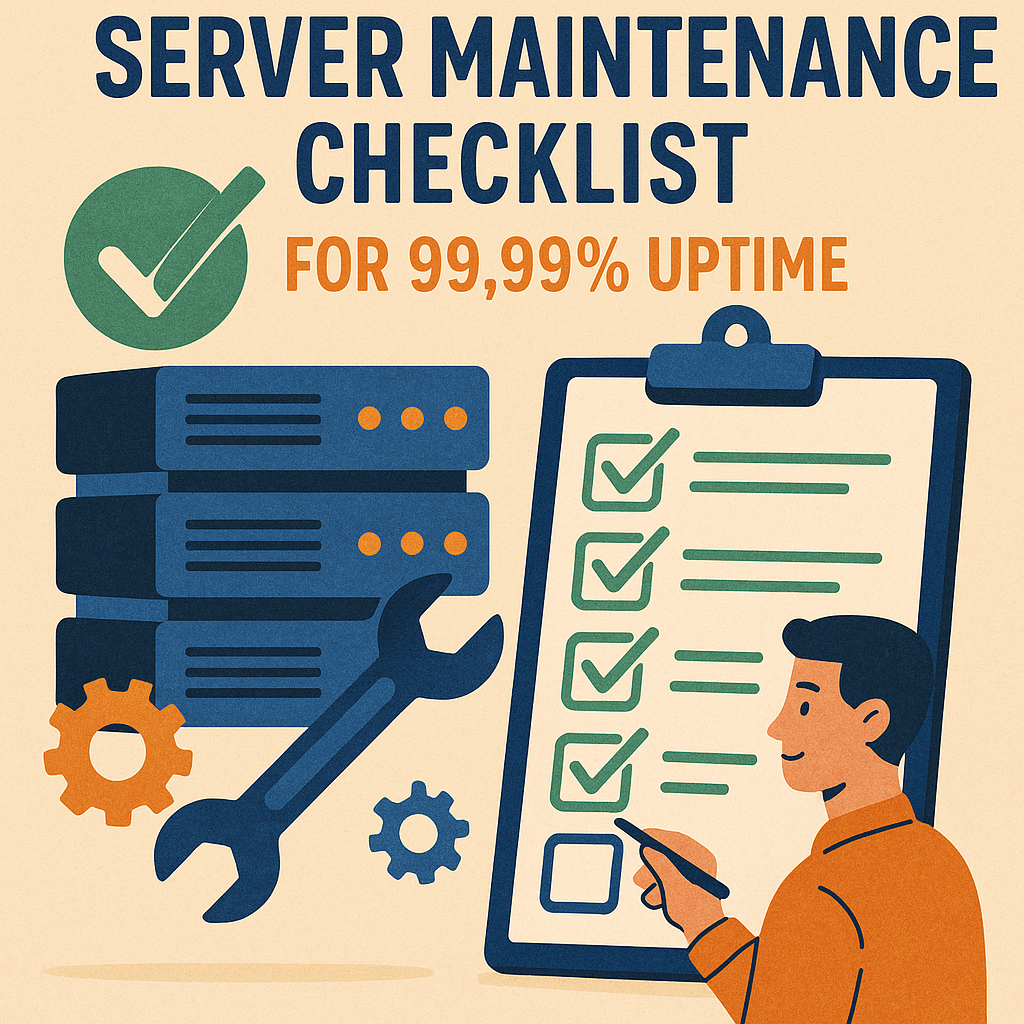How to Set Up an Effective Server Disaster Recovery Strategy

Whether it’s handling data storage, running critical applications, or ensuring smooth communication, servers play a vital role. However, disasters such as cyberattacks, hardware failures, and natural calamities can lead to severe downtime and data loss. This is why a comprehensive server disaster recovery strategy is essential.
An effective disaster recovery strategy ensures that businesses can recover quickly from disruptions while minimizing financial loss and maintaining a solid reputation. By implementing a robust IT support server plan, organizations can safeguard their mission-critical infrastructure from potential failures.
This guide will walk you through how to set up an effective disaster recovery strategy for your IT support server, ensuring minimal downtime and quick data recovery in the event of a failure.
What Is a Server Disaster Recovery Strategy?
A server disaster recovery strategy is a structured approach to restoring IT infrastructure, applications, and data after a failure. It includes a mix of preventive, detective, and corrective measures that help reduce downtime and protect critical business functions.
A well-defined disaster recovery plan allows a server management company or an in-house IT team to quickly restore systems, ensuring business continuity with minimal disruption. This plan should be well-documented and frequently tested to guarantee its effectiveness when an actual disaster occurs.
Key components of a server disaster recovery strategy include:
- Risk Assessment: Identifying potential threats and vulnerabilities.
- Backup and Restore Procedures: Ensuring data integrity and availability.
- Failover Mechanisms: Implementing automated recovery solutions.
- Communication Plan: Notifying employees and stakeholders about the disaster.
- Regular Testing and Maintenance: Ensuring the strategy remains effective over time.
By incorporating these elements, organizations can minimize the impact of disasters and recover their IT infrastructure quickly and efficiently.
Why Is a Server Disaster Recovery Plan Important?
A reliable IT support server recovery plan is essential for various reasons:
- Minimizes Downtime: Reduces operational disruptions by ensuring quick system recovery.
- Protects Business Continuity: Keeps mission-critical applications and services running.
- Reduces Data Loss: Ensures backup strategies safeguard essential business information.
- Mitigates Cybersecurity Threats: Protects against ransomware, hacking, and other cyber risks.
- Ensures Compliance: Many industries require server support services to maintain disaster recovery plans for regulatory reasons.
- Enhances Customer Trust: A well-prepared disaster recovery strategy reassures clients that their data and services will remain available even in a crisis.
- Prevents Revenue Loss: The longer a system remains down, the greater the financial impact. A disaster recovery plan helps businesses maintain revenue streams during and after disruptions.
When an organization experiences server failures, the effects can be devastating. By investing in professional server support, businesses can create a proactive approach that ensures resilience against potential threats.
Step-by-Step Guide to Setting Up an Effective Server Disaster Recovery Strategy
1. Conduct a Risk Assessment
Before implementing a server support disaster recovery plan, conduct a risk assessment to identify threats to your infrastructure:
- Natural Disasters (earthquakes, floods, fires)
- Cyber Threats (ransomware, phishing, DDoS attacks)
- Hardware Failures (server crashes, overheating, power surges)
- Human Errors (accidental data deletions, misconfigurations)
A professional server support provider can help assess and mitigate these risks effectively.
Risk assessments should be conducted regularly and updated based on emerging threats and changing business needs.
2. Define Recovery Objectives
Set clear recovery goals to determine how quickly your IT support server must be restored after a disaster:
- Recovery Time Objective (RTO): The maximum downtime your business can tolerate.
- Recovery Point Objective (RPO): The maximum data loss in terms of time (e.g., last backup taken before failure).
A server management company can help optimize these objectives based on your business needs.
By defining these objectives, businesses can ensure they allocate resources efficiently, ensuring that critical services are prioritized during recovery efforts.
3. Implement Regular Data Backups
Data backup is a fundamental component of server support disaster recovery. Consider these backup strategies:
- Full Backup: A complete copy of all data (weekly or monthly).
- Incremental Backup: Only backs up changes made since the last backup (daily or hourly).
- Differential Backup: Preserves modifications made since the last complete backup.
Best Practices:
- Follow the 3-2-1 Backup Rule (three copies of data, two different storage types, one offsite backup).
- Use outsourced server support for secure and automated cloud-based backups.
- Encrypt backups to protect against unauthorized access.
An effective server support services provider will offer automated backup solutions that ensure data remains accessible and protected at all times.
4. Choose a Disaster Recovery Site
A disaster recovery site is a backup location where server services can be restored in case of failure. Options include:
- Hot Site: A fully operational duplicate of your IT support server that allows immediate failover.
- Warm Site: A partially configured backup location requiring some setup before use.
- Cold Site: A space with power and network availability but no pre-installed hardware, requiring longer recovery time.
Many server support services now offer Disaster Recovery as a Service (DRaaS) for faster and more cost-effective failover solutions.
Investing in a dedicated disaster recovery site can be a crucial aspect of ensuring rapid recovery during major disruptions.
5. Develop a Comprehensive Disaster Recovery Plan (DRP)
A disaster recovery plan should include:
- Roles and Responsibilities: Assign tasks to IT teams, server support services, and management.
- Incident Response Protocols: Steps to detect, contain, and respond to disasters.
- Backup and Restore Procedures: Detailed instructions on how to recover from data loss.
- Communication Plan: Ensure employees, stakeholders, and customers receive timely updates.
A server management company can assist in drafting and maintaining this documentation for easy execution during an emergency.
A well-documented disaster recovery plan ensures that all stakeholders understand their roles and responsibilities, minimizing confusion during an actual crisis.
6. Implement Failover and Redundancy Mechanisms
Failover and redundancy mechanisms improve server reliability and availability:
- Load Balancing: Distributes network traffic across multiple IT support servers to prevent overloading.
- RAID Configurations: Protects data from hard drive failures.
- Failover Clustering: Automatically switches operations to a backup server in case of failure.
- Redundant Power Supplies & Cooling Systems: Prevents hardware failures due to overheating or power issues.
Investing in professional server support ensures these redundancy measures are correctly implemented.
7. Test Your Disaster Recovery Plan Regularly
Routine testing ensures your server disaster recovery strategy remains effective. Recommended testing methods:
- Tabletop Exercises: Simulated discussions of potential disaster scenarios.
- Backup Recovery Tests: Verifies that backups can be restored successfully.
- Full-Scale Failover Testing: Runs a failover scenario to measure RTO and RPO performance.
Outsourced server support teams often provide scheduled DR testing as part of their service offerings.
Conclusion
A well-planned server disaster recovery strategy is crucial for minimizing downtime and protecting business continuity. Whether you rely on in-house IT teams or outsourced server support, following best practices in risk assessment, backup management, and disaster recovery testing will ensure your business is prepared for any disaster scenario.
For businesses seeking expert guidance, a server management company can provide professional server support, helping to implement and maintain a robust DR plan.




No comment